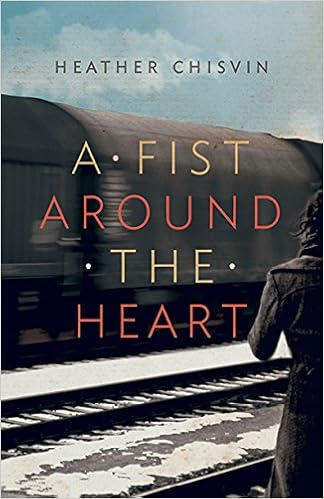 Two Russian
Jewish sisters were sent to Winnipeg during the Anti-Jewish pogroms in the
Russian Empire following the assassination of Tsar Alexander II in 1881. Esther, the older sister, spends her entire
life in Winnipeg, occasionally experiencing episodes of mental illness; Anna,
younger by four years, moves to New York City and ends up being a women’s
rights activist there. In 1942, Esther
returns to Winnipeg when she learns her sister has died in an apparent
suicide. Having difficulty believing
Esther took her own life, Anna reads Esther’s journals and examines her own
memories of key events which shaped her life and that of her sister.
Two Russian
Jewish sisters were sent to Winnipeg during the Anti-Jewish pogroms in the
Russian Empire following the assassination of Tsar Alexander II in 1881. Esther, the older sister, spends her entire
life in Winnipeg, occasionally experiencing episodes of mental illness; Anna,
younger by four years, moves to New York City and ends up being a women’s
rights activist there. In 1942, Esther
returns to Winnipeg when she learns her sister has died in an apparent
suicide. Having difficulty believing
Esther took her own life, Anna reads Esther’s journals and examines her own
memories of key events which shaped her life and that of her sister.
The novel
covers just over 60 years, and it is obvious that the author did considerable
historical research. I enjoyed learning
about the California Perfume Company, womb veils, and If Day in Winnipeg. Historical figures like Margaret Sanger make
cameo appearances. Sometimes, however,
it felt as if the scope of the book is too broad and the examination of
historical events is rather superficial.
Anna finds herself in St. Petersburg in 1918, about a year after the Russian
Revolution, but little information is given about the Russian political
situation; the reader is left to figure out Bolsheviks and Mensheviks and
Chekists. (Would a Russian nobleman
support Bolshevism? Anna, for example, attributes
her Bolshevik sympathies to her stepfather, an émigré Russian Count? She tells a Bolshevik, “’If it weren’t for
[Count Chernovski] I wouldn’t be who I am today. I wouldn’t be nearly as sympathetic to your
cause’”?)
Anna is not
always a credible character. When she
arrives in Canada, she is 5 years old. When
she is 9 or 10, she is already spending her time, “reading about Grace
Greenwood and Nellie Bly; articles on workers’ rights and sexual freedom and
the vote for women”? At that age she can
read Harper’s New Monthly and Century Magazine in her second
language? She is only 15 when she finds
herself in a situation that has her moving to Manhattan? What a precocious young girl!
There are
some other implausible events which irk.
That Nathaniel, Anna’s neighbour and friend in Russia, remains her
friend in Canada seems unlikely. He
lives in the north end of Winnipeg, in New Jerusalem, and she lives in the west
end, in Armstrong’s Point. How would
they have found each other? And Anna, a
young girl living in a sheltered world where “there were rules of etiquette for
everything,” is just allowed to wander around the city with Nathaniel? The officer in charge of the investigation
into Esther’s death tells Anna, “’I thought you might want to look around [Esther’s
house] before the police team goes through.
We’ll be restricting access to the property at that time.’” He lets her into Esther’s home even though he
says, “’We don’t want anyone going in until the investigation is over’”? He even tells her, “’You can do whatever you
want.’” I guess police investigative procedures
were very different in 1942? And then
there’s the evasion of a plot problem.
When a friend uncovers Anna’s deep secret, she asks how he found out and
he replies, “’Anna. Don’t ask me
that. It took years.’” Oh please!
The
relationship between the sisters is interesting. Anna looks after her older but more fragile
sister for the longest time but eventually becomes torn between taking care of
Esther and escaping her. That is the
pattern that emerges throughout Anna’s adult life. She convinces herself not to worry about Esther
and to focus on her own life. This type
of behaviour is understandable though it doesn’t always make Anna an admirable character. Anna knows Esther’s diagnosis for about 20
years, yet allows a situation where “After an initial flurry of letters and
phone calls, our correspondence got spotty again”?
Note: I received an eARC of this book from the publisher via NetGalley.
No comments:
Post a Comment